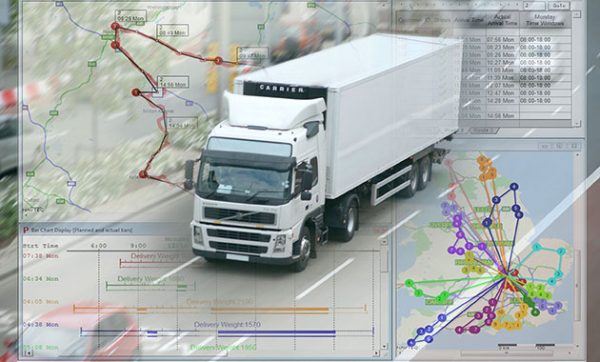Captured information used for driver performance improvements
Paragon announces a major enhancement to its Route Execution system. As well as receiving GPS tracking data, ignition status and odometer data from in-vehicle units, Route Execution can now also receive CanBus data from tracking/telematics systems that make this data available. CanBus is used for data exchange between devices in modern transport vehicles, providing information such as vehicle status and operation that can be captured, analyzed and then utilized to optimize costs and increase efficiency of the transportation operations.
“Transport tracking and fuel consumption monitoring systems are intended to help in effective fleet management. With more and more transport operators making use of vehicle tracking technology, it makes sense to link tracking information to planned delivery schedules. One of the major benefits of Paragon Route Execution is the Driver-Debrief information it provides, such as plan vs. actual distance, duty time, call time and arrival times, plus unscheduled stops and off-route mileage,” said William Salter, CEO, Paragon Software Systems. “With Paragon Route Execution’s support of CanBus information, it is now possible to see the key driving style measures and, if necessary, replay the route with the driver to see where they occurred. Having this information all in one place makes life a lot easier for the transport manager.”
Telematics units record driving style events, such as harsh braking, over-speeding, excessive idling time, freewheeling and over revving; then this data is interfaced into Route Execution together with the usual GPS, distance and ignition information. The CanBus data is saved into the Paragon SQL reporting database, and can be used to show trends – and hopefully improvements – week by week at driver level. The data can also be used to produce driver performance charts that compare driver behavior. This is valuable input for driver training, leading to improvements in fuel economy and reductions in CO2 and greenhouse gas emissions.
A Paragon map display showing the planned route and the actual route can show CanBus events on the map or in a table layout. This data is very useful for debriefing the driver immediately on his return to help him improve his performance. Not only does the system indicate which stretch of road any over-speeding, harsh braking or excessive idling events took place, but managers can also review missed or late deliveries and identify any diversions from the planned route.
In total there are twelve separate driving style measures. These can be monitored and reported individually, either per driver or per journey, such as the number of harsh breaking or over-revving occurrences. Alternatively it can be amalgamated as a single weighted “CanBus Penalty Points” score, with each factor given a weighting to reflect what is important. A summary table, trip by trip, can then highlight which drivers were good, average or poor performers. All of this is configurable by the user. It is also possible to have journey and driving style data sent to the transport manager automatically for immediate driver debriefing with the data transfer triggered by the vehicle on its return to the depot.
Paragon now has more than 25 certified interfaces with vehicle tracking and telematics systems all over the world, and interfaces with additional telematics systems are currently in development. Route Execution can also interact with more than one type of tracking technology at the same time – which is invaluable for companies using more than one tracking supplier or wanting to use spot hire vehicles that may have alternative GPS tracking units installed.
“Only real world information can provide transport planners with the insight they need to review and refine existing planning parameters, making delivery routes more realistic and schedules more achievable,” adds Salter. “Customers will see real benefits from the integration of CanBus data, fostering an environment for continuous improvement.”


